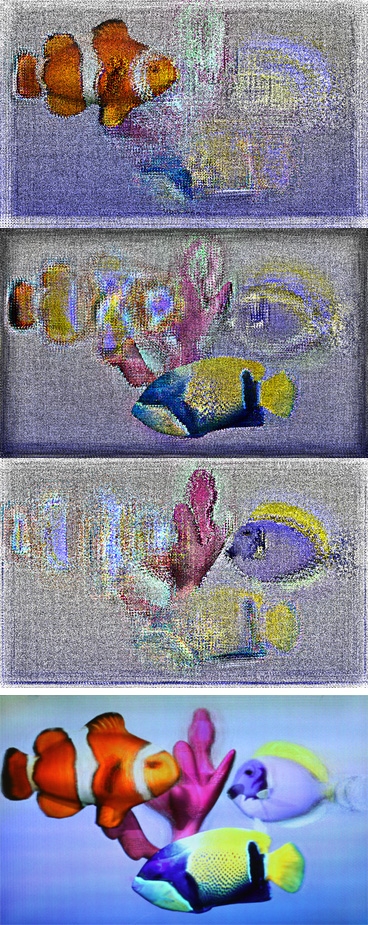A new paper from MIT’s Media Lab presents a new approach to multiple-perspective glasses-free 3D television that could be a realistic consumer option sooner than one might think.
As you move around an object, your perspective changes, but 3D movies and TV offer a single, fixed perspective that require special glasses to view the effects.
Holographic television will someday provide a complete three-dimensional viewing experience with varying perspectives. However, this is a long way off as it will require complex hardware capable of producing really tiny pixels.
A realistic short-term option
A solution proposed in a new paper from MIT Media Lab’s Camera Culture group may provide a better short-term option, though.
The Tensor Display uses several LCD layers to produce a 3D illusion. Algorithms generate patterns tailored to the top and bottom screens in order to filter the light emitted by the display in more sophisticated ways, creating an image that would change with varying perspectives.
To achieve multi-perspective images to accommodate a moving viewer would require the screen to refresh 10 times for every frame, a rate of 1,000-hertz. However, the MIT team added another LCD screen to the mix to get the refresh rate down to 360 hertz.
Considering there are LCD TVs on the market now that can achieve 240-hertz refresh rates, this is not such a far-reaching concept.
The additional screen displays yet another pattern – something which would make calculating the patterns even more complex. However, the researchers realised that not all aspects of a scene change with the viewing angle, and so the pattern-calculating algorithms were made to exploit this fact, reducing the amount of information being sent to the LCD screens and thus improving the final image resolution.

From the top, the patterned images displayed on the three layered LCD panels and, on the bottom, the composite image that would reach one eye at one viewing angle (images courtesy of the Camera Culture group)
Not one prototype, but two
The Media Lab researchers have also developed a second prototype that uses only two LCD panels and, between them, a sheet of lenses that refract light left and right. The LCD panel on the bottom alternately displays one image intended for the left eye, which is diffracted to the left, and another for the right eye, which is diffracted to the right.
The lenses serve to widen the viewing angle of the display, increasing the viewing angle from 20 degrees with the three-panel display to 50 degrees with the refractive-lens version.
Commercially viable
The team at MIT claims its prototype displays provide a more practical solution for 3D TV in the short term as we wait for holographic displays to become a reality.
“It’s definitely suitable for commercial applications, because each component is commonplace, and it sounds easy to manufacture, so this ought to be something that a consumer electronics company would license,” said Gregg Favalora, a principal at the engineering consultancy Optics for Hire and co-chair of the SPIE Stereoscopic Displays and Applications Conference. “Honestly, this is a really big deal.”
3D TV image via Shutterstock